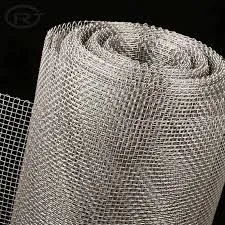-
+86 15030157877
-
sales@galvanizedmetalmesh.com
Oct . 21, 2024 14:14 Back to list
Welded Wire Mesh Panel Manufacturing Process and Factory Overview
Overview of Weld Mesh Panel Factories Production and Applications
Weld mesh panels are essential components in a variety of sectors, serving a wide range of functions from construction to agricultural applications. These panels, made from thin wires that are welded together at intersecting points, provide strength and stability while allowing for airflow, light, and visibility. This article explores the significance of weld mesh panel factories, the manufacturing process, and their diverse applications.
The Manufacturing Process
The production of weld mesh panels begins with selecting high-quality raw materials. Typically, low carbon steel wire is utilized due to its excellent tensile strength and flexibility. The process begins with wire drawing, where large coils of steel are drawn through dies to achieve the desired diameter. The most common wire diameters for weld mesh range from 1.6mm to 5mm, depending on the application requirements.
Once the wire is prepared, it is cut into specified lengths, and the welding process commences. This is typically done through a computerized system that ensures precision in the layout and spacing of the welded intersections. The cutting and welding of the wires can be adjusted to create various mesh sizes, meeting specific criteria for different applications. After welding, the sheets are usually subjected to strength testing to ensure they meet required standards. The final steps include cleaning the panels and applying protective coatings, such as galvanization, to enhance corrosion resistance and longevity.
Types of Weld Mesh Panels
Weld mesh panels come in various forms, suited for specific applications. Common types include
1. Building and Construction In the construction sector, weld mesh panels are integral to concrete reinforcement, offering additional support to slabs, foundations, and walls. 2. Fencing Solutions Welded wire fencing is widely employed to secure properties and enclosures, providing protection against intruders or animals while maintaining visibility.
weld mesh panel factory

4. Safety Barriers These panels are also utilized in safety applications, such as crowd control barriers and protective screens in industrial settings.
5. DIY Projects With their ease of use and versatility, weld mesh panels are popular among DIY enthusiasts for various crafts and home improvement projects.
Importance of Quality Control
The efficacy of weld mesh panels heavily relies on adherence to quality control standards throughout the production process. Factories must implement rigorous testing protocols to ensure that the panels can withstand environmental stresses and load requirements. Regular audits and inspections are crucial to maintain consistency and quality in the finished product.
The sustainability of the production process is also gaining attention. Many factories are adopting eco-friendly practices, such as recycling waste materials and using energy-efficient machinery. This not only reduces the environmental impact but also enhances the overall economic viability of weld mesh panel production.
Conclusion
Weld mesh panel factories play a critical role in various industries by producing indispensable products that contribute to safety, security, and efficiency. The meticulous manufacturing process, combined with stringent quality control, ensures that these panels meet the diverse needs of modern applications. As industries continue to advance, the demand for high-quality weld mesh panels is likely to rise, pushing factories to innovate and adapt to new challenges. With their versatility and strength, weld mesh panels will undoubtedly remain a cornerstone in construction, agriculture, and beyond.
-
Premium Welded Gabion Mesh | Robust & Eco-Friendly
NewsJul.31,2025
-
Premium Eco-Friendly Roof Tiles | Affordable & Durable
NewsJul.31,2025
-
Premium Roof Tiles for Durable & Stylish Roofing Solutions
NewsJul.30,2025
-
High-Quality Roof Tiles for Durable & Stylish Roofing Solutions
NewsJul.29,2025
-
High Quality Square Wire Mesh Manufacturer & Supplier for Wholesale
NewsJul.29,2025
-
Premium Roof Tiles for Durable & Stylish Roofing Solutions
NewsJul.29,2025



